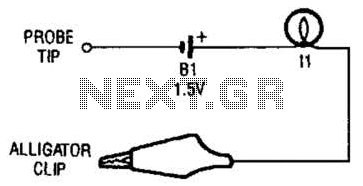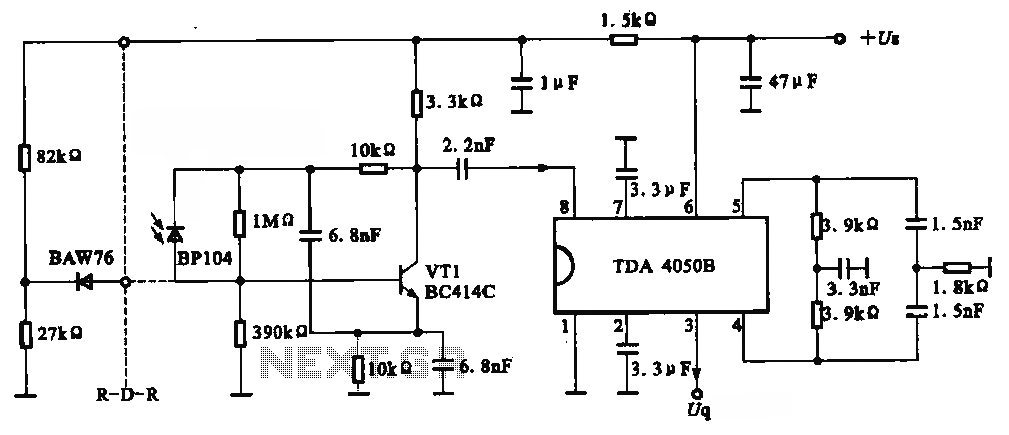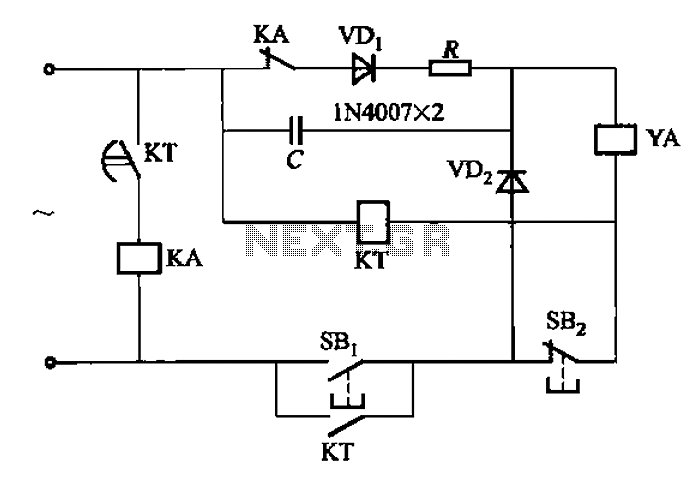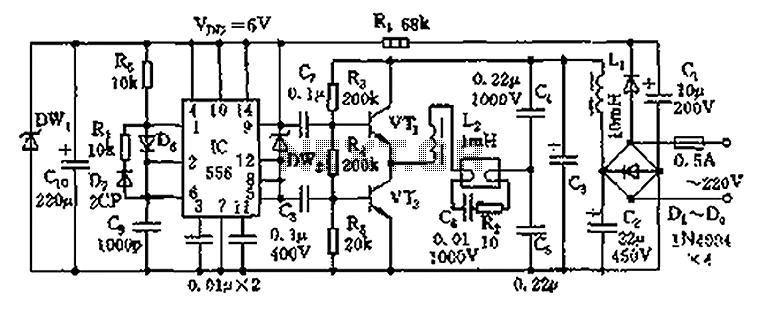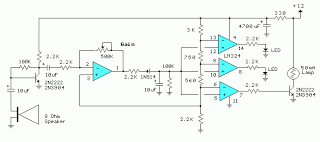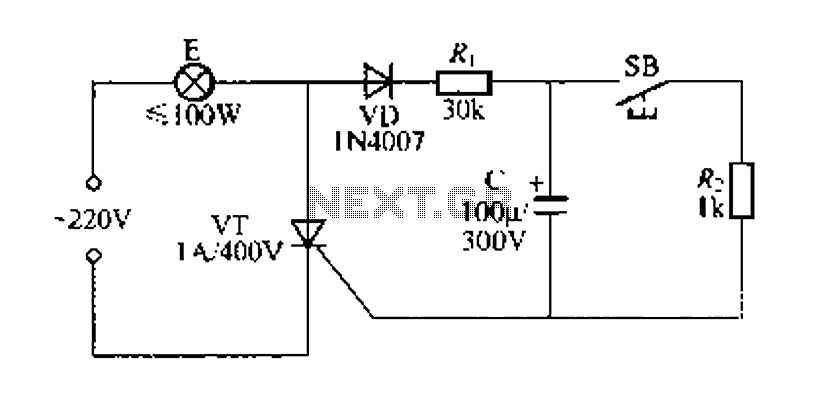
simple precision current source circuit
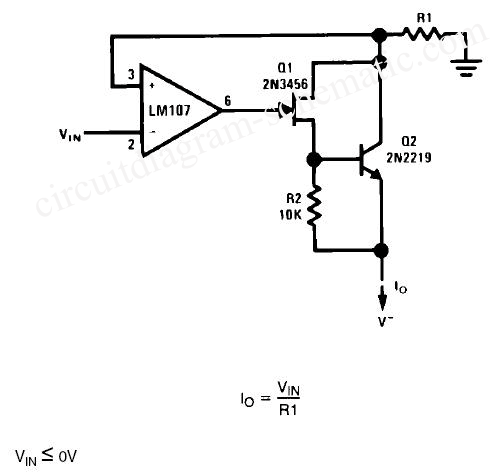
The impedance of these current generators is essentially infinite for small currents, and they maintain accuracy as long as VIN is significantly greater than VOS and IO is much higher than I bias. The source employs a FET to drive a bipolar output transistor. A Darlington configuration can replace the FET-bipolar combination in situations where the output current is high, and the base current of the Darlington input does not introduce a significant error. The amplifiers utilized must be compensated for unity gain, and additional compensation may be necessary based on load reactance and external transistor parameters.
Current generators are critical components in various electronic applications, providing a stable output current that is largely independent of load variations. In this design, the use of a Field Effect Transistor (FET) to drive a bipolar output transistor allows for a high input impedance, which is advantageous for minimizing the loading effect on the preceding circuit stage. The FET operates in the saturation region, ensuring that it can handle small input signals without distortion, thus preserving the integrity of the output current.
In scenarios where output current demands are elevated, a Darlington pair can be utilized as an alternative to the FET-bipolar configuration. This arrangement consists of two bipolar junction transistors (BJTs) connected together, which significantly amplifies the input current. The Darlington configuration is particularly useful for applications requiring high current gain, as it allows for a small input current to control a much larger output current without introducing considerable error due to base current draw.
Compensation of the amplifiers is essential to ensure stability and prevent oscillations at unity gain. This involves adjusting the feedback network to account for phase shifts introduced by load reactance and the characteristics of the external transistors. The compensation technique may vary depending on the specific application requirements, including the frequency response and dynamic behavior of the circuit.
The schematic diagram associated with this design would typically illustrate the interconnections between the FET, bipolar transistor, and compensation networks, providing a visual representation of the circuit's operation. Key parameters such as input and output voltages, bias currents, and load conditions would also be indicated to facilitate a comprehensive understanding of the system's performance.The impedance of these current generators is essentially infinite for small currents and they are accurate so long as VIN is much greater than VOS and IO is much greater than I bias. The source use an FET to drive a bipolar output transistor. It is possible to use a Darlington connection in place of the FET-bipolar combination in cases where the o
utput current is high and the base current of the Darlington input would not cause a significant error. The amplifiers used must be compensated for unity-gain and additional compensation may be required depending on load reactance and external transistor parameters.
Here is a schematic drawing : 🔗 External reference
Current generators are critical components in various electronic applications, providing a stable output current that is largely independent of load variations. In this design, the use of a Field Effect Transistor (FET) to drive a bipolar output transistor allows for a high input impedance, which is advantageous for minimizing the loading effect on the preceding circuit stage. The FET operates in the saturation region, ensuring that it can handle small input signals without distortion, thus preserving the integrity of the output current.
In scenarios where output current demands are elevated, a Darlington pair can be utilized as an alternative to the FET-bipolar configuration. This arrangement consists of two bipolar junction transistors (BJTs) connected together, which significantly amplifies the input current. The Darlington configuration is particularly useful for applications requiring high current gain, as it allows for a small input current to control a much larger output current without introducing considerable error due to base current draw.
Compensation of the amplifiers is essential to ensure stability and prevent oscillations at unity gain. This involves adjusting the feedback network to account for phase shifts introduced by load reactance and the characteristics of the external transistors. The compensation technique may vary depending on the specific application requirements, including the frequency response and dynamic behavior of the circuit.
The schematic diagram associated with this design would typically illustrate the interconnections between the FET, bipolar transistor, and compensation networks, providing a visual representation of the circuit's operation. Key parameters such as input and output voltages, bias currents, and load conditions would also be indicated to facilitate a comprehensive understanding of the system's performance.The impedance of these current generators is essentially infinite for small currents and they are accurate so long as VIN is much greater than VOS and IO is much greater than I bias. The source use an FET to drive a bipolar output transistor. It is possible to use a Darlington connection in place of the FET-bipolar combination in cases where the o
utput current is high and the base current of the Darlington input would not cause a significant error. The amplifiers used must be compensated for unity-gain and additional compensation may be required depending on load reactance and external transistor parameters.
Here is a schematic drawing : 🔗 External reference
